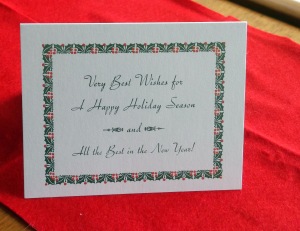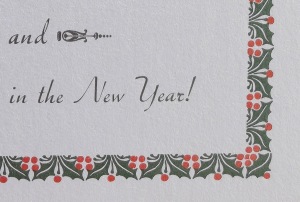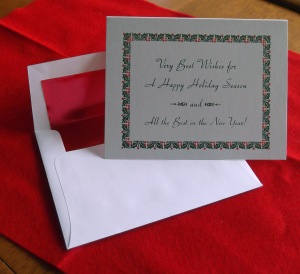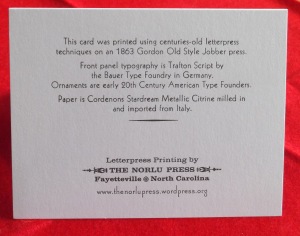This post is part of my preparation for a first-time ever Norlu Press event that will take place later this year. More posts to follow as the big days get closer.
The form of letterpress printing that the west has known since the middle of the 15th Century began in Germany, when Johannes Gutenberg and his associates Peter Schoffer and Johann Fust combined movable types with an adaptation of wine and oil presses to reproduce information in printed form with speed and quality theretofore unknown.

As an aside, this historical novel about what happened in Mainz is a great read and one of my favorite books on the history of printing.
My dad composed and printed his first lines of metal type in 1937 and although he was not of German heritage, he lived a printer’s life, immersed in the legacy of the famous German Gutenberg. He passed his passion for printing on to me and thanks to my mother’s genes, I enjoy a special connection to the land of Gutenberg. Mom’s great grandparents came from the European states of Bavaria, Hesse-Darmstadt and Baden, which all became part of modern Germany. I am unaware if any of my German ancestors were printers, but as I apply what I learned from my dad (who was born in Italy), I often reflect on the legacy of German printing.
Dad was proud that an Italian named Giambattista Bodoni designed one of the most enduring and beloved typefaces, but many of the technological advances in letterpress printing owe their discovery to Germany, the ancestral homeland of my mother.

In addition to Guttenberg, Fust and Schoffer, one must consider the Linotype type casting machine patented by German-born inventor Ottmar Mergenthaler. He perfected the technology to cast lines of letters and words as single pieces of metal type.

Heidelberg printing presses made in Germany were known for their technical superiority and are central to what remains of the letterpress printing enterprise of the 21st Century.

Not all of the German contributions to printing were demonstrations of mechanical superiority. The innovative and minimalistic Bauhaus school of design (1919-1933) introduced modernism to architecture. Its melding of technology and art influenced design of furniture, automobiles and eventually graphic design and typography.

After learning the basics of letterpress printing as a teenager, my father used his World War II GI Bill to attend the printing program at the Rochester Institute of Technology. After graduation, he worked initially as a pressman, tending the workhorse printing press of his day, the Miehle Vertical that American of German descent Robert Miehle designed.

I will share my progress as I invoke my German ancestry and prepare The Norlu Press for the upcoming engagement. In the meantime, here is a 19th Century lithograph from Nuremberg, Germany with a hint about what is coming up. Prost!





